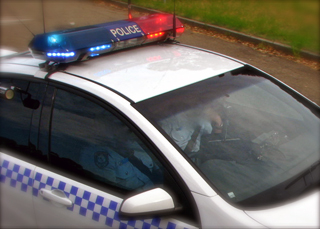Our 4G perfect for emergency use: Telstra

Commercial 4G networks would be much better suited for the communications of emergency services than dedicated networks, which will be prohibitively expensive due to high labour and construction costs, the nation's largest telecommunications company Telstra has said.

(On the job ... image by Highway Patrol Images, CC2.0)
The issue of whether the government should allocate some of the 700MHz spectrum specifically for emergency services has gathered momentum in the last few months, with emergency service organisations (ESOs) pleading with the government for spectrum, while the telecommunications industry has raised concerns about the allocation of this spectrum in the "waterfront" spectrum bands that are expected to sell at auction for over $1 billion at the end of 2012. In a recent submission (PDF) to a Senate inquiry on emergency services communication, Telstra said that using commercial 4G networks would offer a better option for emergency service organisations.
Telstra is currently in the process of switching on its Long Term Evolution (LTE) or 4G network at a number of base stations ahead of a launch of the service to customers in metropolitan cities and a number of regional centres by the year's end.
"The sharing of 4G infrastructure provided by commercial providers is a significantly more cost effective solution, due to the sharing of costs and the ability to leverage from existing infrastructure," Telstra said. "Commercial networks can be customised to provide different levels of prioritised access for voice and data in a more cost effective manner than that possible with a stand-alone network."
In their joint submission to the inquiry (PDF), the Australian Mobile Telecommunications Association and the Communications Alliance agreed with Telstra that commercial LTE networks would be able to prioritise emergency communications.
"Such prioritisation capabilities could be very valuable to ESOs during emergencies or natural disasters by allowing them to continue to communicate when a telecommunications network is dealing with congestion from increased call volumes and/or reduced capacity," they said.
Telstra already provides access priority for government voice communications over its 2G mobile voice network, and this feature will be applied to Telstra's 3G network next year, according to the telco.
"The enhanced security and availability features of mobile broadband networks means that ESOs no longer need dedicated infrastructure to ensure that communications are available in a disaster situation. Telstra considers that ESOs can now realistically share the same network infrastructure that is used by other commercial and non-commercial users," Telstra said.
Should emergency service organisations opt to build their own network, they would face construction costs amounting to billions of dollars, Telstra said.
"The cost of building a new 4G network from scratch (not one that is being upgraded) with such an expansive coverage footprint, high availability, fast upload and download data speeds, and the necessary infrastructure diversity, runs into many billions of dollars," Telstra said.
Ongoing maintenance and operational costs would also be quite expensive for the ESOs, the telco said.
"Considering the size of these expenses, and noting that the number of existing commercial networks has already consolidated from four to three (through the merger of Hutchinson and Vodafone), it seems very unlikely that Australia could justify the business case for building a fourth stand-alone mobile broadband network for use by ESOs."
The roll-out of the National Broadband Network (NBN) and LTE upgrades for the three major telcos would also place pressure on labour resources, which would only be increased if ESOs wanted to build their own network, according to Telstra.
"The building and operation of broadband networks is not a core business activity for ESOs but it is for the mobile network operators," the telco said. "Telstra considers it would be more efficient and effective for ESOs to acquire their mobile broadband network requirements from the commercial operators allowing ESOs to focus their attention and resources on the delivery of front-line emergency services."
The telco is concerned that if emergency services are given some of the spectrum in the 700MHz band and is unable to fund the construction of a new network, then that spectrum will go to waste. If the ESOs do go down that path, Telstra has sided with the government in suggesting that the 800MHz band may cater to this need.
"Telstra notes that spectrum in the range from 806MHz to 820MHz could easily be reserved for ESO use as it has already been identified for release as part of the Australian digital dividend spectrum and is unlikely to be sought by other users," Telstra said.
Federal Attorney-General Robert McClelland today released the terms of reference for a steering committee to ensure the ESOs have adequate communications networks available to them, particularly focusing in the 800MHz band. The steering committee has been tasked with assessing the communications requirements of ESOs, reviewing the 800MHz band and developing a national implementation plan to potentially allocate spectrum from this band specifically for emergency services.
"The natural disasters Australia experienced over the past summer have demonstrated how critical it is that our emergency responders are equipped with the best technology and communication networks. The government is determined to make this technology available to our agencies," McClelland said.
While the Australian Fire and Emergency Services Authorities Council is open to the idea of using the 800MHz spectrum, the police remain opposed to using the 800MHz spectrum, with the Police Federation of Australia stating that the 700MHz spectrum band is more suited for their needs.